#saint jean d'acre
Text
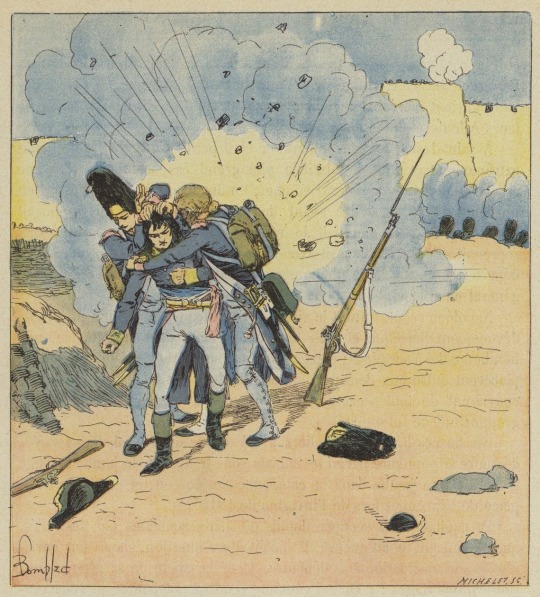
At St Jean d'Acre, the grenadiers Daumesnil and Souchon cover Bonaparte with their bodies to protect him from the shrapnel of a bomb blast.
by Louis Charles Bombled
#napoléon#napoleon#bonaparte#napoleon bonaparte#napoléon bonaparte#acre#art#siege of acre#louis charles bombled#pierre daumesnil#claude souchon de chanron#grenadier#grenadiers#french revolutionary wars#history#france#french#europe#european#middle east#saint jean d'acre#st jean d'acre#ottoman empire#ottoman#french republic#siege
133 notes
·
View notes
Text
Eugène about Kléber
This is for @gabrielferaud, translated once again from Eugène's memoirs. The passage continues right where we left off in this post. Timeline: Egyptian campaign, during the campaign into Syria 1799, siege of Acre. (I've broken the text up in two paragraphs for besser readability.)
General Kléber, as impatient as the rest of the army with the length and futility of the siege of Saint-Jean d'Acre, said one day that he did not understand why we insisted on staying in front of this shanty and that, if he were in the place of the general-in-chief, he would have left the camp a long time ago. Somebody suggested that it was a question of the glory of General Bonaparte: "Bah! bah!" he said in his German accent, "it's a nice suit with a spot of dust on it: with a flick of the wrist you can make it go away".
This comment, although in essence an honourable one for the General-in-Chief, was distorted and aggravated, as were others like it, in the reports made to him, with the result that he was effectively irritated with General Kléber. But it is impossible to imagine that he was jealous of this general. His rank and military reputation placed him so far above him that this reason alone was enough to prevent him from feeling any jealousy. It is more natural to think that Kléber felt this way about a general younger than himself and whose superiority offended him. It is also fair to say that General Kléber did not lack good reasons for criticising the siege of Saint-Jean d'Acre, which was undertaken rather sloppily and without having assembled the means necessary to push it forward vigorously. Neither the engineers nor the artillery were up to the task, with the result that the bravery and talents of the officers of these two arms were spent in vain.
Now look who’s critisizing his stepdad 😋. But i feel like Eugène tries to understand both sides here. He defends Napoleon against the accusations that had been made against him, yet admits that Kléber’s criticisms were warranted.
29 notes
·
View notes
Text
Here's some Templars whose research distracted me very well from the happenings in Paris and the fact I'm ordering food via phone to go out as little as possible. Okay. Here's what I found:


Transcript of the first and second page:
André de Montbard
was born on November 5th 1097. All we know is that he had richt even noble parents and that he was the fifth Grand Master and founder of the Templars.
Bertrand de Blanchefort
was the sixth Grand Master and was born sometime in 1109. He fostered the Templars as guardians of travelling Christians rather than brutes despite their weaponry. For three years he was a prisoner of was and went on one single expedition, declining a second.
Philip of Nablus, also: of Milly
actually a Jerusalem-born man in 1120. Wasn't too fond of being Grand Master yet submitted to Almaric pressuring him. He became seventh Grand Master and resigned in 1171.
Ode de St. Amand
was the eigth Grand Master born in 1110. He was captured by Saladin in the battle of Morj Ayyun, to the dismay of his fellows since he was described as a headstrong guy, leading in both praise and resentment and being a valuable member.
Arnold of Torroja
born in wherever and whenever, he was the ninth Grand Master at the ripe age of 70. He worked on Hispaniola in the Reconquista. His capability in negotiating even with Saladin made him an important GM, so important that his tomb was only discovered in 2018, very well hidden from others.
Gerard de Rideford
hid his birth year but died in 1189. Used to be the 10th Grand Master of the Templars. He used king Henry II's money to bring more troops to Jerusalme. Apparently he was pretty beloved, as Saladin offered his life for a peaceful surrender, which succeeded and he was released to Tortosa.

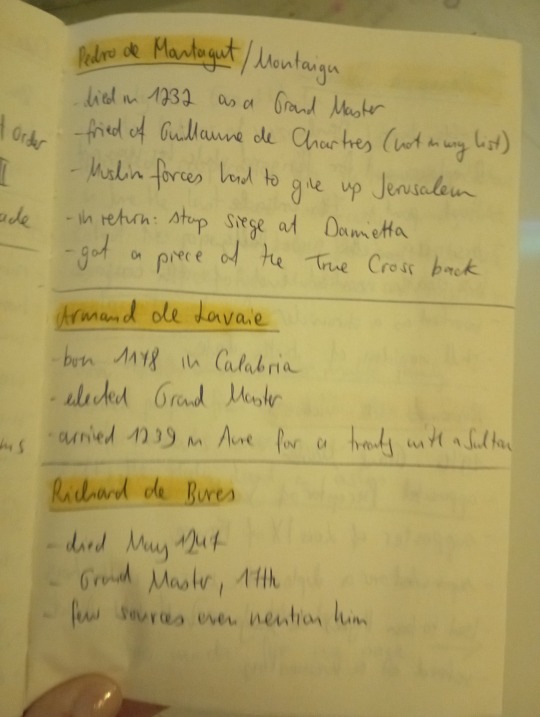
Transcript of the third and fourth page:
Robert de Sablé
was born a lord of Sablé in 1150. Not only was he the eleventh Grand Master but also member of the Valiant Order. Helped Henry Hunior revolt against his daddy Henry II and also convinced Islamic troops to retreat in the third crusade.
Gilbert Erail (or Horal)
born whenever, died in 1200. He was the twelfth Grand Master and aspired to wage peace, not war, in between Christians and Muslims.
Philippe de Plessis
castle-forn or rather fortress-born in France in 1165. Was the thirteenth Grand Master of the Templars and had semi-good relationships to the Hospitallers (kinda like the Templars but evangelican Maltesers). Suggested a peace treaty with Malek Adhel.
Pedro de Montagut (or Montaigu)
died in 1232 while still being a Grand Master and ways a friend of Guillaume de Chartes, whoever that was. Made a deal with the Muslims: they gave up Jerusalem while the Templars stopped the siege of Damietta. Most importantly he got a piece of the True cross, I wonder if that's still somewhere?
Armand de Lavaie
he was born in 1178 in Calabria and elected Grand Master. Death is really unclear, some say he died in battle, others say he survived capture. In 1239 he arrived in Acre for a treaty with a sultan.
Richard de Bures
is somewhat of a ghost since all we know is he died in May 1247 and was the seventeenth Grand Master.

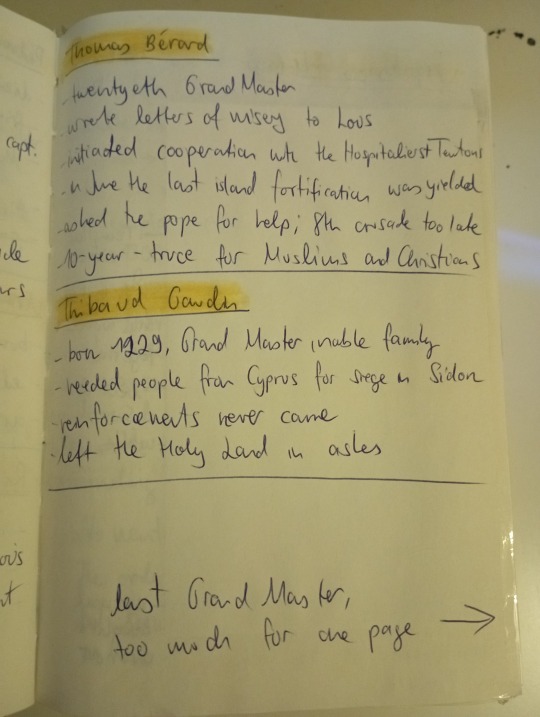
Transcript of the fifth and sixth page:
Guillaume de Sonnac
a noble-born Frenchman whose birth date is unclear. Took part in the successful 7th crusade. He worked as a chronicler for the Templars, lots of information we know on them cites him as source. He replaces Périgord while this guy was captured, and his death was the end of the 17th crusade.
Renaud de Vichiers
was the 19th Grand Master of the Templars and the preceptor of Saint Jean-d'Acre. He was having issues with Hugues de Joug and had to throw him out of the order to stop their fight. Lois IX of France was a supporter and financer of Renaud, but he again fought with him and parted int he end over a diplomatic mission. He retired in a monastery, and if not alone, he argues to this day.
Thomas Bérard
wrote letters of misery to king Lois despite being twentieth Grand Master and somewhat respectable. He initiated a cooperation with the Hospitaliers Teutons and yielded the last island's fortification in June. Asking the Pope for help he waged the 8th crusade which became the last since Lois died. His most significant win: a 10-year-truce for Muslims and Christians.
Thibaud Gaudin
another man with rich parents boen in 1229 was the 22nd Grand Master of the Knights Templars. Demanding people from Cyprus for a siege in Sidon wasn't successful since the reinforcements never came, so he left the Holy Land in ashes.
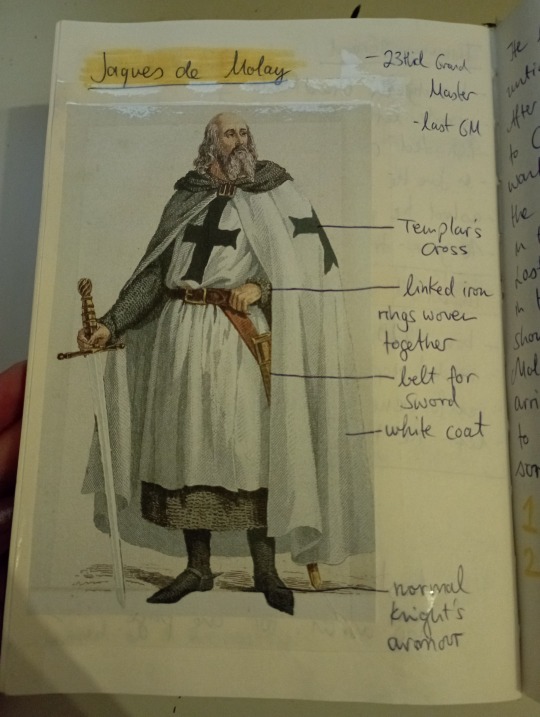
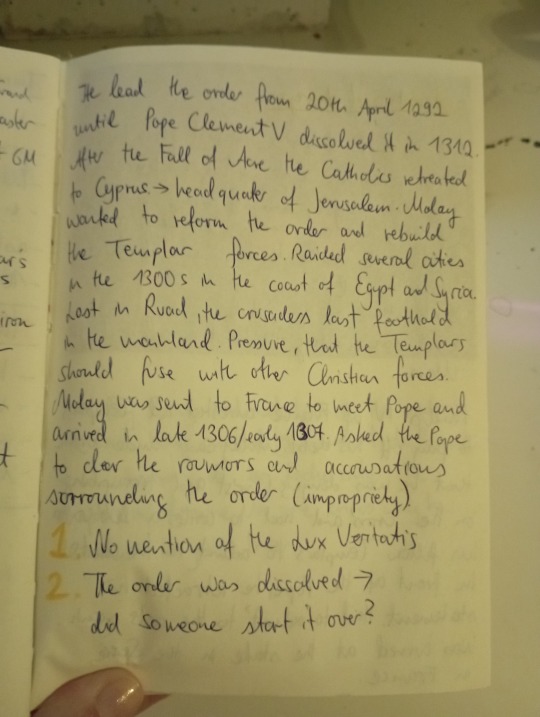
That's Jaques de Molay, the 23rd and last of the Knights Templar's Grand Masters. I found a painting depicting him and it showed me how Templars looked like, from an ancient point of view, not one in Hollywood. Templars were called Knights Templars and would own and wear a normal knight's armour during the day. Above that, they had a white cloak with a black Christian cross on it, and a leather belt in which they could carry their swords in.
Molay lead the order from the 20th April of 1292 until Pope Clement V was having none of it and dissolved the order in 1312. After the fall of Acre the Catholics retreated to Cyprus, the headquater of Jerusalem. He wanted to obviously keep the order and tried to rebuild the Templars, raiding several cities in the 1300s at the coast of Egypt and Syria (not very Christian huh?). They lost in Ruad and had to retreat to the shore, always feeling the pressure to collaborate with other Christian forces. Molay was sent to France to meet up with the Pope and arrived in 1306 or 1307. He even asked the Pope to wipe the name of the Knights templars clear and adress the rumours and accousations.
What I gathered from all of this?
There is no mention of the Lux Veritatis and the order was dissolved and never officially continued. Now, theory: what if someone started over and renamed the club into the LV? Could that be possible? I mean, there's plenty of ties to France...
#tomb raider angel of darkness#traod#classic tr#tomb raider#angel of darkness#journal#aod#lara craft#tomb raider series
2 notes
·
View notes
Photo

« Pendant deux siècles, le sable boira le sang des preux, et l'Histoire retiendra des noms : Tancrède de Hauteville, Raymond de Toulouse, Godefroy de Bouillon. Des patronymes pour bannières de chrétienté et romans de Pierre Benoit. La vague durera deux siècles jusqu'à la chute de Saint-Jean-d'Acre en 1291, sous le boutoir mamelouk. Réparties en flux successifs (les huit croisades des classificateurs), de la Scandinavie à la Sicile, par les champs et par les mers, des troupes hétérogènes coulent vers Jérusalem. C'est un torrent de foi, baroque et fatigant, traversé par la grandeur ou le calcul. Une histoire d'hommes. »
Sylvain Tesson, « Syrie, sur les traces des croisés », Le Figaro Magazine, jeudi 23 décembre 2021
Photo: Thomas Goisque
15 notes
·
View notes
Text
« Pendant deux siècles, le sable boira le sang des preux, et l'Histoire retiendra des noms : Tancrède de Hauteville, Raymond de Toulouse, Godefroy de Bouillon. Des patronymes pour bannières de chrétienté et romans de Pierre Benoit. La vague durera deux siècles jusqu'à la chute de Saint-Jean-d'Acre en 1291, sous le boutoir mamelouk. Réparties en flux successifs (les huit croisades des classificateurs), de la Scandinavie à la Sicile, par les champs et par les mers, des troupes hétérogènes coulent vers Jérusalem. C'est un torrent de foi, baroque et fatigant, traversé par la grandeur ou le calcul. Une histoire d'hommes. »
Sylvain Tesson, « Syrie, sur les traces des croisés », Le Figaro Magazine, jeudi 23 décembre 2021
3 notes
·
View notes
Text
“Whenever circumstances allow: the passing of her former father-in-law Henry II in 1189, the departure for the Holy Land and the long absence of Richard Coeur de Lion, detained in Saint-Jean d'Acre then in Austria, dying in April 1999, [Constance of Brittany] takes over the reins of power in the name of her son Arthur. This young woman, remarried a third time to Guy de Thouars (1199), is moreover intentionally called "ducissa Britannie et Rochemundie comitissa", "comitis Conani filia". The study of Mrs. Y. Hillion defined her real personality which manifested itself in, among other things and until her death in September 1201, by a policy favorable to the cities where she stayed (Nantes, Hennebont, Auray) and their activities ( Saint Malo). It was on her advice that the young Arthur had d'Auray built, destined to become one of the favorite stays of the dukes and the fulcrums of their territorial domination. There are still some archaeological evidence of this work, in irregular arrangement of gneiss rubble in the form of a section of wall and the base of a tower. Donations are also attributed to urban religious establishments, to Sainte-Croix de Quimperlé, Saint-Melaine and Saint-Georges de Rennes, to the priory of Kermaria-an-Dro de Lannion, to which it recognizes important seigneurial rights ( an oven, a mill). She encourages the development of trade, concedes a market on Fridays to the Bishop of Saint-Malo and his canons. Under her administration, the cities were the seat of large feudal assemblies. It was in Rennes in 1196, during a crucial meeting, that she had her son Arthur, just eight years old, recognized as duke.”
-Jean-Pierre LeGuay, Les Duchesses de Bretagne et Leurs Villes in Reines et Princesses au Moyen Âge Vol. 1
3 notes
·
View notes
Text
Evacuating the wounded from Eylau
He must evacuate as quickly and as well as possible his wounded from the village of Eylau which offers neither suitable shelter nor subsistence and where, as in Brünn, in overcrowded and unsanitary barns, an epidemic of typhus is likely. On the outskirts of Warsaw, in Inowraklaw, a vast castle has been converted into a general hospital, well heated, abundantly provided with food and medicine. The only drawback, it is sizeable, lies in its distance of 250 kilometers, but fortunately there are sleds, light cars, even bad carts. Under pressure from Larrey, Napoleon, who remembers the successful evacuation of Saint-Jean d'Acre, orders the departure of the first convoys, convinced "that it was better to expose our wounded to the vissicitudes of a long, difficult, and always very painful evacuation, than to see them die by causes which it would be impossible to remedy. [..] It is true that our transports were done with great care: each convoy was accompanied by the number of medical officers, non-commissioned officers, and nursing soldiers, that was necessary to give the wounded all the relief they needed on the way. Their food and their soup were prepared in advance, at each station, by non-commissioned officers who preceded the convoys. "
Despite frost and thaw, synonymous with ploughed up and bogged down roads, despite the shortage of food, success smiles on this unprecedented enterprise in Europe. Of the 7000 French and 5000 Russians who were operated on, 91% not only survived but arrived healed in Inowraklaw!
"I remember placing myself on the cars several wounded who could hardly move on their beds, and who we feared would expire within twenty-four hours; however, they reached their destination, without fever, wounds cleansed, and in very good condition. "
This result is also to be put down to the tireless dedication, which Larrey likes to stress, of Percy, his line colleague, and of his friends Ribes and Jouan. All are rewarded by the Emperor, Larrey is made "commander" of the Legion of Honor.
Jean Marchioni - Place à monsieur Larrey, chirurgien de la garde impériale.

#napoleonic#jean marchioni#place à monsieur larrey#dominique jean larrey#campaign of prussia poland#pierre françois percy#ribes#jouan
19 notes
·
View notes
Photo

Bataille du Mont Thabor, gravure 1858
#général#kléber#bataille#mont thabor#campagne#egypte#egypt#Napoleon Bonaparte#siège#saint jean d'acre#הר תבור#israel#mont tabor#armée d'orient
0 notes
Text
An apocryphe anecdote about Kléber and Eugène
Émile Marco de Saint-Hilaire (actually Marc-Emile Hilaire) was a journalist and novel-writer during the July monarchy who provided the public with a bunch of fake memoirs and other texts related to the napoleonic times, occasionally inspired by actual memoirs but usually simply inventing them himself.
One of these anecdotes takes place in Egypt, during the siege of Saint-Jean d’Acre:
All the arrangements for the siege of Saint-Jean d'Acre were made, it was said, with the thoughtlessness and carelessness that too much confidence in success always inspires. The trenches were barely three feet deep, so that many soldiers were not sufficiently covered and fell victim to this lack of foresight on the part of the engineer commander.
One morning when General Kléber was walking through the lines of the camp with Eugène de Beauharnais, whom, as captain commanding the guides of the general-in-chief, some of these cavalrymen always had to escort, he was heard to express his dissatisfaction at the fact that the trenches were not pushed further forward and deeper.
- "Look, Blondin," he said to Eugène, "at your stepfather's funny trench; it only goes up to my knee."
This general loved Eugène as one loves a son. Eugène was barely nineteen years old, and by familiarly calling him "blondin", Kléber was alluding to his magnificent hair; but no sooner had he uttered these words, than a bullet fired from the accursed tower tore a part off his cuffed boot and broke the thigh of the guide who was standing next to him. With a movement as swift as lightning, the general threw himself in front of Eugène and stretched out his arms as if to protect him; then he turned his head towards the wounded man and said coldly to Eugène:
- "Well, Blondin, wasn't I right?"
This action, these words, this gesture of Kléber opposing his broad chest to the blows of the enemy to protect his young friend, are sublime; and it must be, because afterwards Prince Eugène could not recall this scene without tears coming to his eyes.
Of course Eugène would do that – except he does not recall this scene at all in his brief memoirs. In fact, there are several hints indicating that the whole anecdote is made up: Eugène’s age is wrong, he was not 19 but 17 during the siege of Saint-Jean d’Acre. Plus, he was not a capitaine at the time but a mere lowly lieutenant, also ADC to his stepfather and surely not commanding the guides (yet) – that was Bessières’s position. While it is not completely impossible that Napoleon would have given his stepson an escort (to avoid death by strangulation if on returning home he had to inform Josephine of her son’s demise), I doubt that was the case. Eugène’s job mostly consisted of taking orders to Napoleon’s subordinate commanders, and there is no indication that he received special protection at similar occasions. In fact, Eugène had already been wounded in action during the first attack of the siege. I’ve also never heard Eugène being called blondin before (a nickname that I do have read in some books was chérubin but I am at a loss as to the original source).
Finally, while Eugène does talk quite a bit about general Kléber and his alleged rivalry with general Bonaparte, he does not mention having been particularly close to Kléber himself.
Still, it is a nice story. And I particularly love the idea that yet another general from the former Armée du Nord/Sambre-et-Meuse was rivalling with general Bonaparte about his stepson’s affection 😋.
13 notes
·
View notes
Photo

Sainte croix en Jarez La chartreuse fut fondé en 1280 par Béatrix de la Tour du Pin, veuve de Guillaume de Roussillon envoyé en 1275 et disparu à Saint-Jean-d'Acre en novembre 1277 . Elle voulut honorer sa mémoire par la prière ; pour ce faire elle se tourna vers l'ordre religieux des chartreux. Elle possédait en fief une forteresse sur l'actuel emplacement du village de Châteauneuf, confluent du Couzon et du Gier et carrefour stratégique des routes allant de l'Auvergne à la vallée du Rhône, à environ dix kilomètres du site choisi pour fonder le monastère.
0 notes
Photo

In Game:
Niccolò Polo was a Venetian merchant and explorer, the brother of Maffeo Polo, and the father of Marco Polo. Working with his brother for the majority of his life, they established trading posts in Constantinople, Sudak, and in the western part of the Mongol Empire.
In 1255, Niccolò and Maffeo met Darim Ibn-La'Ahad, a high-ranking member of the Levantine Assassins, and quickly befriended him. Eventually, their friendship resulted in Darim inviting the brothers to the Assassins' headquarters in Masyaf. In 1256, Niccolò and Maffeo sailed south to Acre, and proceeded onward to Masyaf some time later, arriving there around the January of 1257.
Arriving at Masyaf castle, the Polo brothers found themselves in the presence of the legendary Altaïr Ibn-La'Ahad, the Mentor of the Levantine Assassins and Darim's father. In July 1257, the Polo brothers were trained to become Assassins themselves by Altaïr and Darim, and Niccolò frequently met with Altaïr, hearing the Mentor's life story.
During their stay in Masyaf, Niccolò in turn told Altaïr's life story to Maffeo, who had at first grown a displeasure for the Assassins and Masyaf. Maffeo, moved by Altaïr's tragic life, became dedicated to the Assassins' cause, and Niccolò began to write a journal, detailing Altaïr's story and Niccolò's own conversations with Maffeo, which he would later title "The Secret Crusade".
In August 1257, Masyaf was attacked by the Mongols, who had destroyed several of the Assassins' fortresses in the Levant the previous year, under the command of Hülegü Khan. Having spent a little over a month in training, Niccolò and Maffeo made preparations to leave Masyaf and were given several of Altaïr's books to take with them.
Niccolò then met with Altaïr on Masyaf's castle wall, where he was handed Altaïr's personal Codex. Additionally, the Polos were tasked with the future of the Assassin Order, as Altaïr had burdened them with the objective to establishing various Assassins Guilds around the world.

Niccolò and Maffeo were personally escorted by Altaïr out of Masyaf, who used his "Apple of Eden" – an ancient artifact from the Isu – to fend off the attacking Mongols. Arriving at Masyaf's gate, Niccolò was finally given five Memory Seals, which Altaïr had turned into keys needed to open his personal library.
The Polos proceeded to make their way back to their home in Constantinople, though the brothers were attacked by a Mongol attacking party two days after leaving Masyaf. Niccolò and Maffeo, barely alive, saw the Mongols take the Codex from them, and they were left with the shame of losing the book.
Arriving in Constantinople a few weeks later, Niccolò finished his journal on 1 January 1258, and he and Maffeo started the long process of establish an Assassins Guild soon afterwards. The guild attracted people from various places in the Byzantine Empire, including Greeks, Turks, Albanians, Jews, Genoese and Arabs.
By 1259, the Assassins Guild was fully running, but the thought and shame of having lost the Codex was never far from Niccolò's and Maffeo's minds. The Polo brothers also hid the five Memory Seals given to them by Altaïr in several secret locations around Constantinople, and scattered his books around the various landmarks of the city.
In Real Life:
Niccolò Polo and Maffeo Polo (both born in 1230) were Italian traveling merchants best known as the father and uncle, respectively, of the explorer Marco Polo. The brothers went into business before Marco's birth, established trading posts in Constantinople, Sudak in Crimea, and in a western part of the Mongol Empire in Asia. As a duo, they reached modern-day China before temporarily returning to Europe to deliver a message to the Pope. Taking Niccolò's son Marco with them, the Polos then made another journey through Asia, which became the subject of Marco's account The Travels of Marco Polo.
Leaving Niccolò's infant son Marco behind, Niccolò and Maffeo left Venice for Constantinople, where they resided for several years. The two brothers lived in the Venetian quarter of Constantinople, where they enjoyed diplomatic immunity, political chances and tax relief because of their country's role in establishing the Latin Empire in the Fourth Crusade of 1204.
However, the family judged the political situation of the city precarious, so they decided to transfer their business northeast to Soldaia, a city in Crimea, and left Constantinople in 1259 or 1260. Their decision proved wise. Constantinople was recaptured in 1261 by Michael Palaeologus, the ruler of the Empire of Nicaea, who promptly burned and razed the Venetian quarter and reestablished the Byzantine Empire. Captured Venetian citizens were blinded, while many of those who managed to escape died aboard overloaded refugee ships fleeing to other Venetian colonies in the Aegean Sea.
As their new home on the north rim of the Black Sea, Soldaia had been frequented by Venetian traders since the 12th century. When the Polos reached it, it was part of the newly formed Mongol state known as the Golden Horde. Searching for better profits, the Polos continued their journey to Sarai, where the court of Berke Khan, the ruler of the Golden Horde, was located. At that time, the city of Sarai was no more than a huge encampment, and the Polos stayed for about a year. Finally, they decided to avoid Crimea, because of a civil war between Berke and his cousin Hulagu or perhaps because of the bad relationship between Berke Khan and the Byzantine Empire. Instead, they moved further east to Bukhara, in modern-day Uzbekistan, where the family lived and traded for three years.
In 1264, Niccolò and Maffeo joined up with an embassy sent by the Ilkhanate ruler Hulagu to his brother Kublai Khan, both grandsons of Genghis Khan. In 1266, they reached the seat of Kublai Khan, the leader of the Mongol Yuan dynasty, at Dadu, present day Beijing, China. In his book, The Travels of Marco Polo, Marco explains how Kublai Khan officially received the Polos and sent them back with a Mongol named Koeketei as an ambassador to the pope. They brought with them a letter from the Khan requesting 100 educated people to come and teach Christianity and Western customs to his people and oil from the lamp of the Holy Sepulcher. The letter also contained the paiza, a golden tablet a foot long and 3 inches (7.6 cm) wide, allowing the holder to acquire and obtain lodging, horses and food throughout the Kublai Khan's dominion. Koeketei left in the middle of the journey, leaving the Polos to travel alone to Ayas in the Armenian Kingdom of Cilicia. From that port city, they sailed to Saint Jean d'Acre, capital of the Kingdom of Jerusalem.

(Image source)
The long sede vacante between the death of Pope Clement IV, in 1268, and the election of the new pope in 1271 delayed the Polos' attempts to fulfil Kublai's request. As suggested by Theobald Visconti, then papal legate for the realm of Egypt, in Acre for the Ninth Crusade, the two brothers returned to Venice in 1269 or 1270, waiting for the nomination of the new pope. Here Niccolò met up once again with his son Marco, now fifteen or sixteen, who had been living with his aunt and another uncle in Venice since the death of his mother at a young age.
As soon as he was elected in 1271, Pope Gregory X (the former Theobald Visconti) received the letter from Kublai Khan, remitted by Niccolò and Maffeo. Kublai Khan was asking for the dispatch of a hundred missionaries, and some oil from the lamp of Jerusalem. The two Polos (this time accompanied by the 17-year-old Marco Polo) returned to Mongolia, accompanied by two Dominican monks, Niccolò de Vicence and Guillaume de Tripoli. The two friars did not finish the voyage due to fear, but the Polos reached Kanbaliq and remitted the presents from the Pope to Kublai in 1274. It is usually said that the Polos used the Northern Silk Road although the possibility of a southern route has been advanced. The Polos spent the next 17 years in China. Kublai Khan took a liking to Marco, who was an engaging storyteller. He was sent on many diplomatic missions throughout his empire. Marco carried out diplomatic assignments but also entertained the Khan with interesting stories and observations about the lands he traveled. According to Marco's travel account, the Polos asked several times for permission to return to Europe but the Great Khan appreciated the visitors so much that he would not agree to their departure.

(Image source)
Only in 1291 did Kublai entrust Marco with his last duty, to escort the Mongol princess Koekecin (Cocacin in Il Milione) to her betrothed, the Ilkhan Arghun. The party traveled by sea, departing from the southern port city of Quanzhou and sailing to Sumatra, and then to Persia, via Sri Lanka and India (where his visits included Mylapore, Madurai and Alleppey, which he nicknamed Venice of the East). In 1293 or 1294 the Polos reached the Ilkhanate, ruled by Gaykhatu after the death of Arghun, and left Koekecin with the new Ilkhan. Then they moved to Trebizond and from that city sailed to Venice.
Sources:
https://en.wikisource.org/wiki/The_Travels_of_Marco_Polo/Preface/Chapter_1
https://en.wikipedia.org/wiki/Niccol%C3%B2_and_Maffeo_Polo
13 notes
·
View notes
Photo

FRANCOFOLIES // La Rochelle Programmation 1er jour Mercredi 10 Juillet 2019.
Mercredi 10 Juillet 2019 15h00
CAMELIA JORDANA / CHINE LAROCHE
Theatre Verdiere De La Rochelle
La Rochelle (17)
Mercredi 10 Juillet 2019 18h00
BERTRAND BELIN / JAUNE
Theatre Verdiere De La Rochelle
La Rochelle (17)
Mercredi 10 Juillet 2019 19h00
ANGELE / -M- (MATTHIEU CHEDID) / GAETAN ROUSSEL / RADIO ELVIS
Esplanade Saint Jean D'acre A La Rochelle - Scene Jean Louis Foulquier
La Rochelle (17)
Renseignements cliquez ICI
0 notes
Text
De par son destin tragique et sa carrière exceptionnelle, le maréchal Lannes, duc de Montebello, est une des figures militaires les plus passionnantes de la période napoléonienne…
Fils d'un garçon d'écurie, Jean Lannes est né en 1769 dans un petit village du Gers. La Révolution va lui ouvrir la porte d'un destin militaire exceptionnel. En 1793, il répond à l'appel de la patrie en danger et s'engage avec enthousiasme dans un bataillon de volontaires du Gers. Grâce à son courage exceptionnel et à ses talents de chef militaire, son ascension est fulgurante : il est fait général de brigade dès 1796 puis général de division en 1799.
Durant ces années, il sert en Italie sous les ordres de Bonaparte où il participe activement aux succès du futur empereur. À Lodi, et à la bataille d'Arcole, il se jette sur les lignes ennemies pour encourager ses hommes à aller de l'avant. Blessé par deux balles, il refusera pour autant d'arrêter de se battre.
Bonaparte décide d'emmener en Égypte ce chef courageux qui a gagné dans les plaines italiennes le surnom de «Roland de l'armée d'Italie». En 1799, Il est grièvement blessé lors du siège de Saint Jean d'Acre puis à la bataille d'Aboukir, où son courage est exceptionnel.
Au retour d'Égypte, il participe activement aux préparatifs du coup d'état du 18 brumaire. Quelques mois plus tard, la deuxième campagne d'Italie commence et le nouveau régime est menacé. Lannes va encore une fois s'illustrer lors des victoires de Montebello (ce qui lui vaut le titre de duc de Montebello quelques années plus tard sous l'Empire) et de Marengo.
Ces succès affermissent le pouvoir du nouveau Premier Consul. En récompense de ceux-ci, il est nommé commandant de la garde consulaire par Bonaparte, récompensant ainsi un de ses plus brillants officiers, mais également le soldat devenu ami.
Le 19 mai 1804, après un court intermède comme ambassadeur au Portugal, il est désigné « Maréchal d'Empire » avec dix sept autres généraux. Lannes participe alors à tous les succès du nouvel Empire français. À Austerlitz, le maréchal s'illustre en commandant l'aile gauche durant la bataille. Pendant la campagne de Prusse en 1806, il bat le prince Louis de Prusse à Saalfeld et manœuvre brillamment le centre du dispositif lors de l'éclatante victoire de Iéna. En 1807, la guerre se poursuit contre les russes, et c'est à Friedland qu'il s'illustre lors d'une des plus grandes victoires de l'Empire.
En 1809, s'ouvre alors une nouvelle campagne, la dernière de Lannes qui y laissera la vie lors de la bataille d'Essling (21 et 22 mai 1809) après s'être encore illustré lors du siège de Ratisbonne.
Alors que la bataille d'Essling se termine victorieusement après des combats particulièrement difficiles, le maréchal arpente le champ de bataille en compagnie de son ami le général Rouzet.
Soudain, une balle atteint ce dernier qui s'écroule mortellement touché.
Bouleversé, Lannes s'écrie « Ah, cet affreux spectacle me poursuivra donc toujours ? », puis s'éloigne et s'assoit sur un petit monticule où il est alors lui-même touché aux jambes par un boulet autrichien.
La blessure est grave : il est amputé de la jambe gauche. Malgré cette intervention, il agonise pendant plusieurs jours avant de mourir le 31 mai 1809.
Peu de temps avant sa mort, Napoléon, ému, a recueilli les dernières paroles de cet ami frère d'armes. De Sainte-Hélène , il lui rendra un dernier hommage : « Lannes, le plus brave de tous les hommes… était assurément un des hommes au monde sur lesquels je pouvais le plus compter… L'esprit de Lannes avait grandi au niveau de son courage, il était devenu un géant ».
2 notes
·
View notes
Text
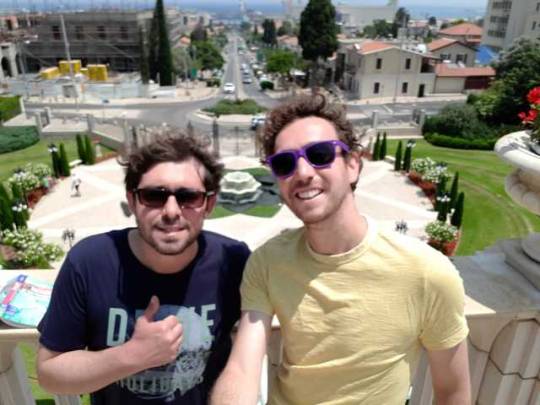



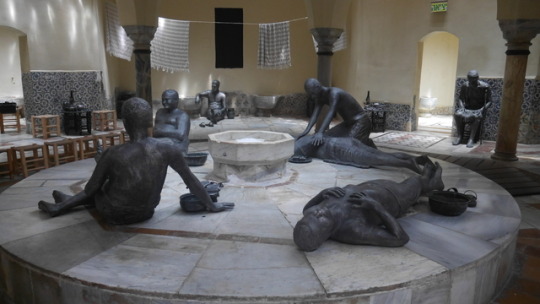




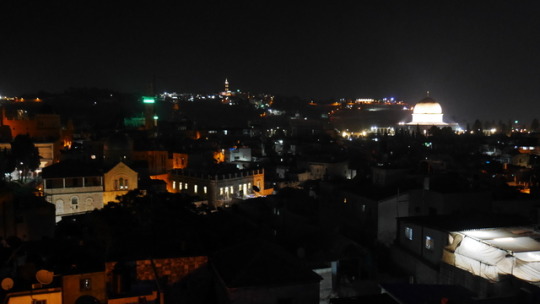
Lendemain de fête !
On traîne un peu au lit...
...avant de se balader dans le centre ville d'Haifa et ses jardins de Bahais.
Pause casse-croûte dans le quartier allemand
On longe la côte jusqu'à Akko (saint-Jean d'Acre), cité aux imposants remparts, à la forteresse impressionnante et aux ruelles secrètes.
On visite le chateau, connu pour ses salles des chevaliers aux proportions incroyables et son tunnel caché.
On visite les bains turcs de Ghattas, remarquablement bien conservés.
Puis cap vers Tel Dor, pour une derniere baignade dans la Méditerranée avant ....
JÉRUSALEM !!!
0 notes
Text
Pierre Daumesnil, 1777-1832

General
Daumesnil's wooden leg is part of the Napoleonic legend as well as the charge of cavalry at Eylau or the pontonniers of the Berezina. The Memorial launched it. Let's quote:
"Napoleon received, during the siege of Saint Jean d'Acre, a proof of heroic and touching devotion: being in the trench, a bomb fell at his feet; two grenadiers immediately threw themselves on him, placed him between them; and raising their arms above his head, covered him on all sides. Fortunately, the bomb respected the whole group; no one was hit. One of these brave grenadiers was later General Daumesnil who lost a leg in the campaign of Moscow, and commanded the Place de Vincennes during the invasion of 1814. The capital had been occupied for several weeks while Daumesnil was still holding it. All Paris was concerned with was his obstinacy in defending himself and the cheerfulness of his response to the Russian summons: "When you give me back my leg, I will give you my place."
The first edition of the Memorial writes Dumesnil instead of Daumesnil. It is Pierre Daumesnil, engaged in 1792 with the hunters on horse, entered the guides of Bonaparte then the consular guard after having saved his general at the bridge of Arcole. It was in Wagram and not in Russia, as Las Cases indicates, that he lost his left leg. Made a baron and general, he received the command of the castle of Vincennes in 1812 and defended it heroically in 1814 and in 1815. It is this resistance which made him enter the legend.
Jean Tulard, Petit Dictionnaire Amoureux de Napoléon

#napoleonic#pierre yrieix daumesnil#jambe de bois#jean tulard#petit dictionnaire amoureux de napoléon#napoleon's generals
24 notes
·
View notes
